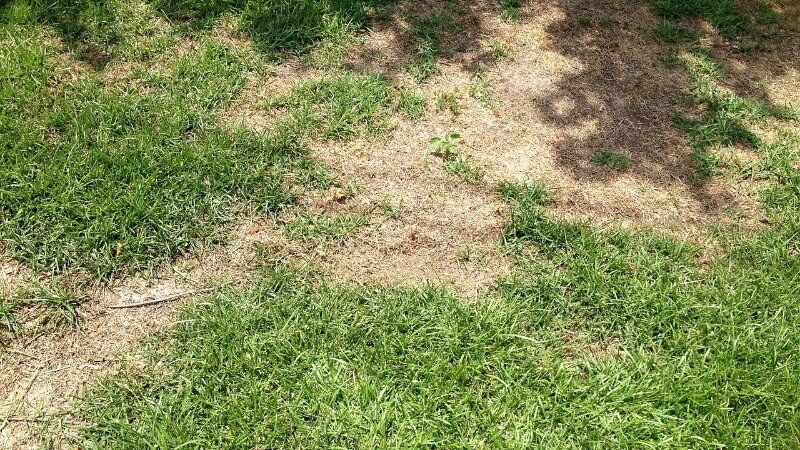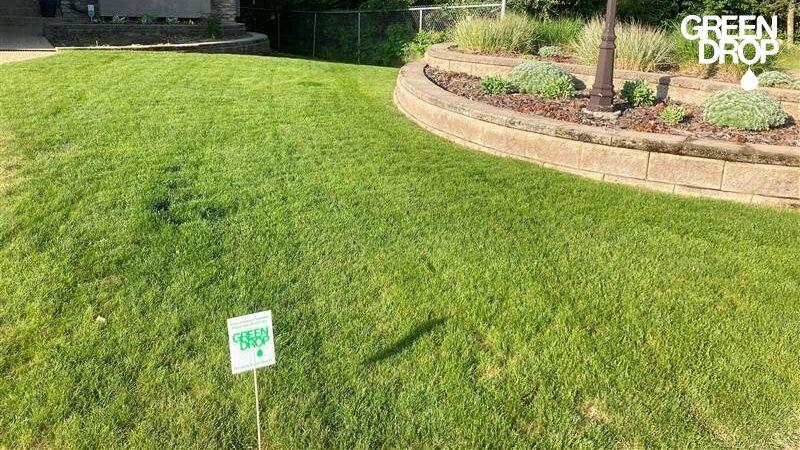Chinch Bug Damage on Your Calgary Lawn? Here's How To Fix It
Reading time: 6 minutesAre you noticing irregular patches of dead grass on your Calgary lawn? The culprit might be chinch bugs—small but destructive pests that can cause significant damage to your turf. These tiny pests thrive in Calgary’s hot summers, stealthily transforming green grass into sad patches of lifeless brown.
Fortunately, with the right approach, you can effectively manage and fix chinch bug damage, restoring your lawn to its lush, green glory. Read on to learn how to identify, treat, and prevent chinch bug infestations in your Calgary lawn.

What Are Chinch Bugs?
Chinch bugs are tiny saboteurs with a big appetite for your grass. These small insects, measuring only about 4 mm, pack a powerful punch when it comes to damaging turf.
Chinch bugs use their piercing mouths to suck the sap out of grass blades. As they feed, they inject a toxin that disrupts the plant's ability to absorb water and nutrients.
These bugs flourish in warm weather, with activity peaking during the hot summer months. Females lay 200 to 300 eggs at a time and can produce multiple generations per season. This means that without intervention, their population can quickly explode.
Early summer is a critical period to watch for young nymphs, which are easier to control. As they mature from red with a white band to black with white wings, they become more resistant to treatments.
How to Identify Chinch Bug Damage
Early recognition of chinch bug damage can save your Calgary lawn. Here’s how to spot some tell-tale signs:
- Wilting Grass: Even if your lawn is well-watered, chinch bug-infested areas will start to wilt. This wilting happens because chinch bugs suck the moisture and nutrients out of grass blades, leaving them unable to maintain their rigidity.
- Yellowing to Straw-Coloured Patches: As the infestation progresses, the affected grass will not only wilt but will also change colour. It begins with a noticeable yellowing, which, if left unchecked, will turn into straw-coloured patches. This discoloration is a clear indication that the grass is dying.
- Timing After Hot Weather: Chinch bug damage often becomes apparent after the first stretch of hot weather. These pests thrive in the heat and increase their activity as temperatures rise, making post-heat wave periods critical for lawn inspection.
- Dead and Healthy Grass Interface: One of the most distinct signs of chinch bug presence is the clear line where damaged, discoloured grass meets healthy green grass. Chinch bugs tend to move gradually across lawns, feeding as they go, which creates this stark contrast. Check these boundary areas in the hottest part of the afternoon since the bugs are most active then.
- Noticeable odour: A strong indicator of a significant chinch bug infestation is the distinct odour they release when crushed. If you detect an unusual smell as you walk across your lawn, this could be a sign that chinch bugs are present in large numbers.
How to Prevent a Chinch Bug Infestation
By maintaining a healthy lawn. Some tips to help:
- Keep your grass at a healthy height, typically around 2–3 inches. This height helps retain moisture and reduces stress, making your lawn less inviting to chinch bugs.
- Use sharp mower blades to ensure clean cuts when mowing. Dull blades tear the grass, stressing it and making it more susceptible to pests.
- Overwatering can attract chinch bugs, but letting your lawn go too dry can weaken it. Strive for a balance by watering deeply but infrequently, which encourages deeper root growth and drought resistance.
- Thatch, the layer of dead grass and organic matter at the soil surface can harbour chinch bugs and other pests. To keep thatch under control, do not allow it to build up more than 1/2 inch.
- Regular aeration helps reduce soil compaction, improve drainage, and facilitate deeper root growth. This strengthens your lawn and makes it less attractive to chinch bugs, which prefer compacted soil because it retains heat and lacks moisture.
- Some grass types are naturally more resistant to chinch bugs and other pests. Consider planting endophytic grasses such as tall fescue or perennial ryegrass, which contain natural toxins that deter these insects.
- Regularly inspect your lawn for signs of chinch bugs, especially during warm, dry periods. Early detection is key to preventing an infestation.

Fixing Chinch Bug Damage On Your Lawn
Chinch bug damage can range from mild to severe, and understanding how to repair your lawn effectively is crucial to restoring its health and beauty.
Addressing Mild Damage
For lawns with mild chinch bug damage where the grass is thin but not completely dead, overseeding and topdressing are your best bet.
- Aerating and Overseeding: Aeration and overseeding go hand-in-hand. First, aerate the lawn to loosen up compaction; then overseed it. Overseeding involves spreading new grass seeds over the affected areas to increase turf density. Choose a seed blend that matches your existing lawn and is resilient against pests. The best time for overseeding is early fall when temperatures are cooler and there’s plenty of moisture.
- Topdressing: After overseeding, applying a thin layer of compost or topsoil can protect the new seeds and provide them with the nutrients needed for growth. This layer also improves soil health, enhancing water retention and aeration.
Handling Severe Damage
When the damage is extensive and large lawn areas are dead, an insecticidal treatment may need to be applied to eradicate the infestation, and re-sodding of the lawn may then be necessary to re-establish a beautiful lawn.
- Insecticide Treatment: Always consult the professionals. They will make sure to you the safest most effective products to help get the chinch bugs under control. You need to ensure to address the root cause of the issue before continuing with repairs as you will ultimately have more issues in the future.
- Soil Preparation: Before laying new sod, it’s essential to prepare the ground. Remove any dead grass and debris. Use a rototiller to loosen up the top 6 to 8 inches of soil, which improves root penetration and water absorption.
- Choosing the Right Sod: Opt for grass types that thrive in Calgary’s climate. Kentucky bluegrass, red fescue, and ryegrass are excellent choices due to their cold tolerance and ability to recover from winter stresses.
- Laying the Sod: Start laying the sod along a straight edge, such as a driveway or sidewalk, to ensure it is aligned properly. Fit the pieces closely together without overlapping, and press down to ensure good contact with the soil, eliminating air pockets.
- Aftercare: Water the newly laid sod deeply immediately after installation to encourage root establishment. Keep foot traffic to a minimum for the first few weeks while the sod takes root. Follow a regular watering schedule, tapering off as the sod becomes established.

Chinch Check: Kick Bug Damage to the Curb with Green Drop
Don't let chinch bugs or other lawn pests bully your grass any longer! With our lawn care services, your turf gets the royal treatment it deserves. From round-the-clock care to expert assessments, our GreenKeepers ensure your lawn gets everything it needs to stay lush, healthy, and, most importantly, bug-free.
Book your lawn care service with Green Drop today, and let our experts tailor a perfect care plan just for your Calgary yard. You can also simply sign up online!
We understand the unique challenges lawns face in Calgary, Edmonton, Red Deer, Regina, Saskatoon, and Winnipeg. Join the Green Drop family and experience the difference professional lawn care makes. Your lawn will thank you, and so will your weekends!

